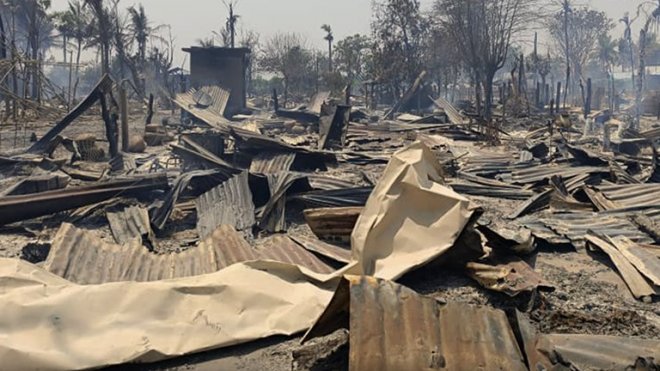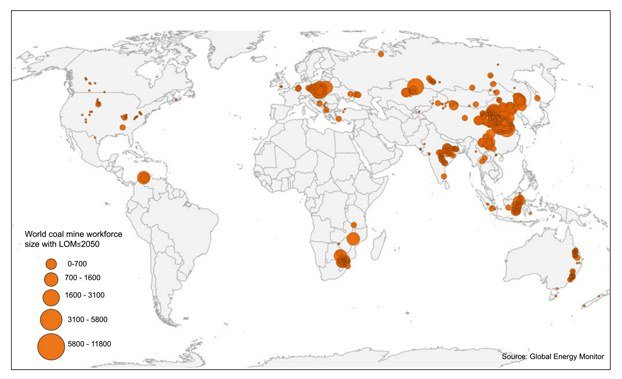Myanmar troops raze two-thirds of homes in Sagaing village
It took two days for the junta to destroy what had taken generations to build in Myo Thit.On April 26, a column of around 150 junta troops entered the village in northern Myanmar’s Sagaing region and began torching buildings, looking for members of the armed resistance.
When they left the following day, more than two-thirds of its structures, including a religious building, had been razed and some 2,000 area residents displaced.
The destruction is just the latest result of fighting in Sagaing, where rebels have put up some of the fiercest resistance to junta rule since the February 2021 coup d’etat – and suffered some of the worst devastation amid the military’s scorched earth offensive in the region.
“The houses built by my grandmother and grandfather are gone now, and the houses built during my mother’s time are gone too,” a resident of Myo Thit who, like other villagers Radio Free Asia spoke with, declined to be named citing security concerns. “There is nothing left. Just a landscape of ruin.”
The resident said that not even a pot of rice she had been collecting had survived the fires set by the military.
“I had collected some rice that other people gave me in this pot as I could not grow rice [on my own], but I can’t even eat it now, because it was burned and the grains are broken and damaged,” she said.
More than 400 of the homes in Myo Thit – a tract of around 600 structures located in Khin-U township – were destroyed in the raid, according to residents.
 More than 400 houses were burned down in Myo Thit village by the junta troops during raids on April 26 and 27. Credit: Khin Oo Township news report
More than 400 houses were burned down in Myo Thit village by the junta troops during raids on April 26 and 27. Credit: Khin Oo Township news report
Villagers returned to the area on April 28, but “found only ashes and ruins,” another resident told RFA.
“It was as if our houses had been cleared away by a big broom,” she said. Residents “can’t even tell whose house used to be where.”
“The reason why [the junta troops] did this is because their objective is to destroy all villages,” she said. “It is their policy to cause poverty and trouble for villagers.”
In addition to the devastation, residents also discovered the charred remains of 55-year-old fellow villager Tun Win, who was the only person to die in the fires. Than Khaing, a 50-year-old woman, was able to escape the soldiers after being arrested and hit in the head with rifle butts, they said.
Hundreds displaced
The more than 2,000 people who fled the raid are now sheltering in nearby villages and monasteries.
One woman who is among the refugees told RFA that all she has to look forward to are donations from residents of the township who know that what little they have could be taken away by the junta just as easily.
“Look at the sight of our village that has been here for generations – how painful it is for us to see this,” she said. “Now, our main concern is finding food and shelter. There aren’t even trees in the area for us to live under. All that we can hope for is that people from nearby villages will share food with us, as we can do nothing for ourselves anymore.”
 More than 400 houses were burned down in Myo Thit during raids on April 26 and 27, forcing more than 2,000 people to flee. Credit: Khin Oo Township news report
More than 400 houses were burned down in Myo Thit during raids on April 26 and 27, forcing more than 2,000 people to flee. Credit: Khin Oo Township news report
According to residents, the junta column that destroyed their village entered Khin-U from neighboring Ye-U township, before burning down 25 homes in Ta Pin Kaung (South) village on April 25.
The military has yet to make any announcement regarding the burning of homes in Myo Thit, and attempts by RFA to reach the junta spokesman for Sagaing region went unanswered on Monday. Junta Deputy Information Minister Major Gen. Zaw Min Tun has previously denied reports of military troops burning civilian homes.
According to Data For Myanmar, an independent research group, the military has burned more than 3,700 civilian homes in Khin-U township between the coup and February 2023.
According to the independent research group Data For Myanmar, since the military coup, more than 3,700 houses in Khin-U have been burned down as of February and nearly 48,000 houses in Sagaing region as of mid-March.
At least 500,000 people have fled conflict in Sagaing since the takeover.
Translated by Myo Min Aung. Edited by Joshua Lipes and Malcolm Foster.
[圖擷取自網路,如有疑問請私訊]
|
本篇 |
不想錯過? 請追蹤FB專頁! |
| 喜歡這篇嗎?快分享吧! |
相關文章
AsianNewsCast























